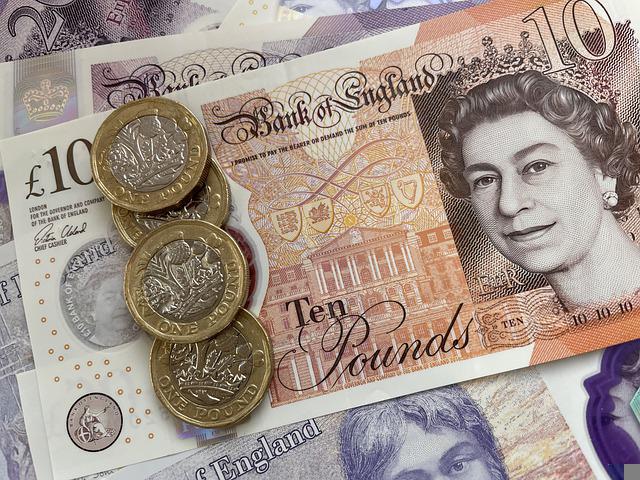4 Global Market Updates- 2 February, 2023
In this article, we have covered the highlights of global market news about the EUR/GBP, NZD/USD, USD/JPY and GBP/USD. EUR/GBP is nearing its highest level since September, slightly around 0.8900 ahead of the BoE/ECB. The EUR/GBP cross gains momentum for the fourth day in a row, reaching the area of 0.8900 on Thursday, at its highest since … 4 Global Market Updates- 2 February, 2023 Read More »

In this article, we have covered the highlights of global market news about the EUR/GBP, NZD/USD, USD/JPY and GBP/USD.
EUR/GBP is nearing its highest level since September, slightly around 0.8900 ahead of the BoE/ECB.
The EUR/GBP cross gains momentum for the fourth day in a row, reaching the area of 0.8900 on Thursday, at its highest since late September.
Expectations of future interest rate increases by the European Central Bank (ECB) in the following months continue to boost the common currency. The recent hawkish remarks by numerous ECB officials, which serve as a tailwind for the EUR/GBP cross, confirmed the bets. The relative underperformance of the pound is also likely attributable to rumors that the Bank of England (BoE) is approaching the end of its cycle of rate hikes.
Nevertheless, the Sterling Pound does get some support from the pervasive US Dollar selling bias. Additionally, indications of inflationary pressures in the Eurozone may have prompted investors to temper their expectations for an ECB policy tightening that would be more aggressive. This prevents the EUR/GBP cross from making any additional advances, combined with hesitation in the wake of the important central bank event risk. Before preparing for an extension of the existing move-up, exercise some care in light of this.
This Thursday’s mid-European session will see the announcement of the BoE and the ECB’s policy decisions. The next leg of a directional move for the EUR/GBP cross will be determined by market attention paid to hints regarding the likely timing of rate hikes. Yet, the underlying environment favors optimistic traders; however, chances for a further near-term appreciating rise need to be supported by a sustained advance above the 0.8900 round-figure level.
The NZD/USD options market signal has become the most bullish in three weeks.
As bulls take a break before the second round of central bank reports on early Thursday, NZD/USD declines from the eight-month high.

As a result, the Kiwi pair maintains the Federal Reserve (Fed) inspired gains, which were at 0.6530 at the time of press.
However, the NZD/USD traders saw the greatest bullish options market indicator after the Fed’s dovish rate rise.
The NZD/USD pair’s one-month risk reversal (RR), which measures the ratio of call to put options, shows a value of +0.080 at the latest. The Daily RR prints have their highest level in three weeks, breaking a two-day winning run.
It’s important to note that the weekly RR, which most recently printed a -0.165 number, is still negative and indicates that the bear is still in control for the third week.
USD/JPY: Mildly offered below 129.00 as rates hover around post-Fed lows, while BoJ discussions applaud YCC action
During the three-day downturn, the USD/JPY pares its losses around 128.60 as the market enters a consolidation phase in front of the second batch of central bank announcements early Thursday.
The Federal Reserve (Fed) caused losses to increase earlier in the day as the yield on Treasury bonds fell to its lowest levels in two weeks. However, after the US Federal Reserve (Fed announcement)’s dovish raise of 0.25%, the 10-year Treasury rates in the US fell the most in two weeks and tested the lowest levels in a fortnight the day before. Jerome Powell, the chairman of the US central bank, indicated his willingness to decrease rates if inflation declines more quickly, which in turn dampened the US dollar and yields. The same encouraged a risk-taking attitude and supported Wall Street bulls.
On the other side, Bank of Japan (BoJ) officials’ hawkish remarks also benefited the GBP/JPY bears. Masazumi Wakatabe, the deputy governor of the Bank of Japan, has said that the BoJ would continue to implement monetary policy to target 2% inflation and wage growth. The Japanese central bank has lately defended the Yields Curve Control (YCC) strategy via several bond market actions. Recently, BoJ’s Wakatabe was heard applauding the YCC decision made by the BoJ.
GBP/USD is poised to breach 1.2400 as the USD Index falls, the BoE’s policy and the US NFP take center stage.
After a brief corrective fall to close to 1.2370 in the early European session, the GBP/USD pair has steadily recovered. The US Dollar Index (DXY) has decreased after pulling back to a level close to 100.60, and the cable is attempting to overcome this resistance level of 1.2400. The USD Index has started to decline again, re-touching its nine-month bottom at around 100.48.

The Federal Reserve (Fed declaration)’s less aggressive monetary policy has increased demand for risky assets. The market players’ increased willingness to take risks has helped the S&P500 futures’ range expand. Investors have ignored the negativity caused by the disappointing US ISM Manufacturing PMI and welcomed the Federal Reserve’s modest interest rate increase (Fed). Despite the extraordinarily bullish market environment, the return on US Treasury bonds with a 10-year maturity has recovered to under 3.42%.
There is a tonne of data to support the argument that the Federal Reserve’s monetary policy tightening is the primary cause of the Consumer Price Index (CPIsteady )’s decline in the United States. One could not dispute the reality that inflation is gradually easing after seeing a slowdown in consumer spending, lower pricing for products and services set by factory owners, a new decrease in labor costs, and three consecutive contractions in the ISM Manufacturing PMI.







